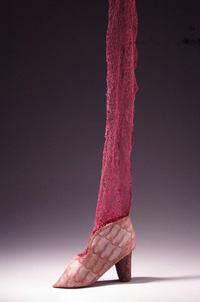Artists are opinionated. I know a very good artist who can’t stand Van Gogh, and I almost got smacked last weekend for admitting I prefer Dali to Matisse. (I prefer almost anyone to Matisse, except Thomas Kinkade). Anyway, we have all encountered artworks that we don’t really get. That’s why this description by Peter Schjeldahl, writing in the New Yorker, struck a chord:
Art itself–its structures and its uses–could seem a sufficient field of meaning, back when people still liked to believe that art’s development expressed an intrinsic, progressive logic. That was called modernism, and it is enshrined in the catechismal hanging of MOMA’s permanent collection, from Cezanne to Pollock. (The style parade obscures the fact that Cezanne and Pollock had real subjects, replete with philosophy and feeling, that emerged through and go beyond art). As a lingering habit of the curatorial mind, modernist presumption shores up some otherwise defenseless work in “Out of Time.” . . . All of them amount to aesthetic demonstration projects that have no conceivable significance outside a gallery or museum–a dedicated art space–which they inhabit with the tender dependency of creatures in a petting zoo.
Schjeldahl is describing some installations in a current MOMA exhibit, but this description could equally apply to many art installations I have encountered.
Last weekend, I visited the Contemporary Crafts Museum in Portland, Oregon, which is hosting an installation by fiber artist Susan Taber Avila. According to the museum’s printed description,
Avila will immerse viewers in a fantastical forest of legs and beaded shoes, exploring the shoe as a fetish object in a society obsessed with image.
My Matisse-loving friend Alicia and I entered a small white room containing about twenty oversized textile shoes, each rooting a net hose which stretched, trunk-like, to the ceiling. The netting was studded with small leaf-like scraps of textile and natural prints were used to construct the shoes. It was the promised shoe forest. It was certainly creative. But we just didn’t really get it. We understood the point; we could probably have written a decent essay about giant shoes as fetish objects. But instead we just sat on the bench the gallery had provided for contemplating the artwork. I finally asked Alicia, “What do you do with something like this when the show is over?” But is that even a fair question?
I do appreciate shoes – that same day, I bought a pair of black leather knee-high boots. William Morris would approve: they are both beautiful and useful. But as Schjeldahl points out, art installations exist in artificial space and time. Like a zoo, the gallery invites certain expectations. Someone who is pleased and surprised to encounter a common garter snake in their yard may be quite disgruntled when the exotic boa sleeping in the Snake House won’t constrict on cue.
 I’m not sure what I expected Avila’s shoes to do, but they didn’t do it. It wasn’t that the display wasn’t creative or interesting. It was simply hard for me to see it as having a life outside the gallery. Compared with actual trees, or a street-scuffed leather boot, or the loop of birdsong piped into the room, the shoe forest seemed so sheltered, delicate, contrived.
I’m not sure what I expected Avila’s shoes to do, but they didn’t do it. It wasn’t that the display wasn’t creative or interesting. It was simply hard for me to see it as having a life outside the gallery. Compared with actual trees, or a street-scuffed leather boot, or the loop of birdsong piped into the room, the shoe forest seemed so sheltered, delicate, contrived.
At home, I put my new boots in the entryway. I have not yet tired of looking at them.
Image: “Open-Toed” by Susan Taber Avila, 2006.
